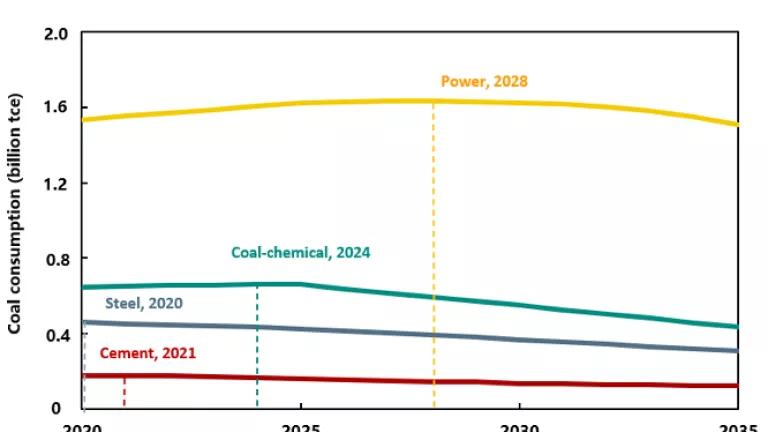Last week, the Communist Party of China (CPC) adopted a proposal for drafting the 12th Five Year Plan (2011-2015) that reiterates clean energy development and greenhouse gas emissions reductions as key priorities of the Chinese leadership. (The Chinese version of the proposal is available here.) China’s Five Year Plans are the key economic planning documents for the state and determine all significant development goals, including those related to climate, energy and environmental protection. The actual 12th Five Year Plan is being drafted by the State Council and is expected to be finalized next March at the annual session of the National People’s Congress.
The proposal, adopted by the Fifth Plenum of the 17th CPC Central Committee meeting, reiterates China’s commitment to making its energy and carbon intensity reduction targets binding domestically in order to effectively address greenhouse gas emissions. China will seek to reasonably control energy demand growth and control energy-intensive industries from growing too quickly. It will also seek to improve energy efficiency laws and standards, build energy-saving market mechanisms and continue with its step-by-step efforts to establish carbon markets. China will also seek to strengthen the target responsibility system for energy savings and emission reductions and improve its energy and GHG emissions statistics and monitoring systems, since meeting the targets also depends on China continuing to strengthen its governance system and get a handle on its data. (See paragraph 22 of the Chinese-language proposal.)
China also plans to invest in RD&D of low-carbon technologies. In particular, China will seek to develop 7 new strategic industries, many of which are crucial to clean energy development: new-generation information technology, energy-saving and environmental protection technology, new energy, biology, high-end equipment manufacturing, new materials and new-energy cars. (See paragraph 13 of the proposal.) China will also seek to expand the services sector, using tax and pricing systems to incentivize growth. This will be important to support efforts to reduce the dominance of China’s energy and emissions-intensive heavy industries. There is also a renewed emphasis on conserving and protecting the quality of water, a resource inextricably linked with rising energy demand.
Also last week, an official from China’s National Energy Administration, Deputy Director Huang Li of the Energy Conservation Department, stated that China would adopt a 17.3 percent energy intensity reduction target in the 12th Five Year Plan (2011-15) and a 16.6 percent energy intensity reduction target in the 13th Five Year Plan (2016-20) (Chinese news). As other commentators have noted, these are not official or finalized, but they are in line with the final numbers (between 15 to 20 percent) expected to be announced in the coming months.
Huang also stated that China would seek to increase the installed capacity of hydropower to 380 GW, nuclear to 80 GW, and wind, solar and biomass power, collectively, to 200 GW by 2020. He noted that expansion of natural gas, nuclear and renewables such as hydro and wind would reduce the share of coal in China’s primary energy consumption from the current 70 percent to 62 percent by the end of the 12th Five Year Plan (2011-15).
While setting energy intensity reduction targets of 20 percent over the next two Five Year Plan periods would signal a push for even deeper efficiency gains and greater economic restructuring, the targets cited by Director Huang represent a substantial commitment by China to rein in its rapid energy demand and emissions growth. China’s top leaders have also made it clear that these energy intensity reduction targets are matters of national importance, and provincial and local officials are in an all-out push over the next few months to meet their share of the 11th Five Year Plan’s national 20 percent energy intensity reduction target (an effort which shows the seriousness with which officials are treating the targets, though some actions such as cutting off power to hospitals and for street lights have been ill-advised, as my colleague Alex Wang has blogged about).
NRDC recently released a working paper analyzing China’s commitment to reduce its carbon intensity by 40-45 percent by 2020 compared to 2005 levels. In our analysis, we examined three scenarios based in part on different assumptions about China’s energy intensity reductions in the 12th and 13th Five Year Plans[i]:
In the Previous Commitments Scenario, China fulfills only the energy intensity reduction targets it set under the 11th Five Year Plan, and enacts no additional policies in the 12th and 13th Five Year Plans, leading to a 31 percent reduction in energy intensity and 37 percent reduction in carbon intensity by 2020 compared to 2005 levels.
In the Extended Efforts Scenario, China makes extended efforts including reducing its energy intensity by 16 percent and 14 percent in the 12th and 13th Five Year Plans, respectively, leading to a 42 percent reduction in energy intensity and 48 percent reduction in carbon intensity by 2020 compared to 2005 levels.
In the Economic Restructuring Scenario, China is successful in achieving fundamental economic restructuring, making consecutive 20 percent reductions in energy intensity in the 12th and 13th Five Year Plan periods, leading to a 49 percent reduction in energy intensity and 57 percent reduction in carbon intensity by 2020 compared to 2005 levels.
The energy intensity targets that Director Huang put forth last week fall in between the last two scenarios, resulting in a cumulative energy intensity reduction of 45 percent from 2005 to 2020 and putting China on a pathway that would be consistent with its commitment to reduce carbon intensity by 40-45 percent by 2020 from 2005 levels. Of course, China’s ultimate success in meeting its 2020 carbon intensity reduction target will depend not only on its success in reducing its energy intensity, but also its progress in expanding the share of non-fossil fuels and reducing the share of coal in the energy mix and expanding the use of natural gas. Director Huang’s announcements about China’s nuclear, hydro, wind, solar and natural gas development plans make it clear that China is planning to push forward on all these fronts.
As I have discussed before, China’s carbon and energy targets (including its pledge to increase the share of non-fossil energy in its primary energy consumption to around 15 percent by 2020) are significant actions. The announcements coming out of the CPC Central Committee plenum last week highlight that China is committed to continuing to take the actions needed to meet the climate and energy targets it set for itself at Copenhagen, and to inscribe these in the 12th Five Year Plan, demonstrating continued ambition on the part of the Chinese leadership to expanding clean energy and addressing climate change.
[i] As we have noted in our analysis, China’s carbon intensity will depend not only on its success in reducing its energy intensity but also its progress in increasing the share of non-fossil fuels and improving the relative shares of fossil fuels in the energy mix, as well as GDP growth assumptions.
This post was coauthored by NRDC China Climate Fellow Michael Davidson and NRDC China Climate and Energy Project Director Alvin Lin.



